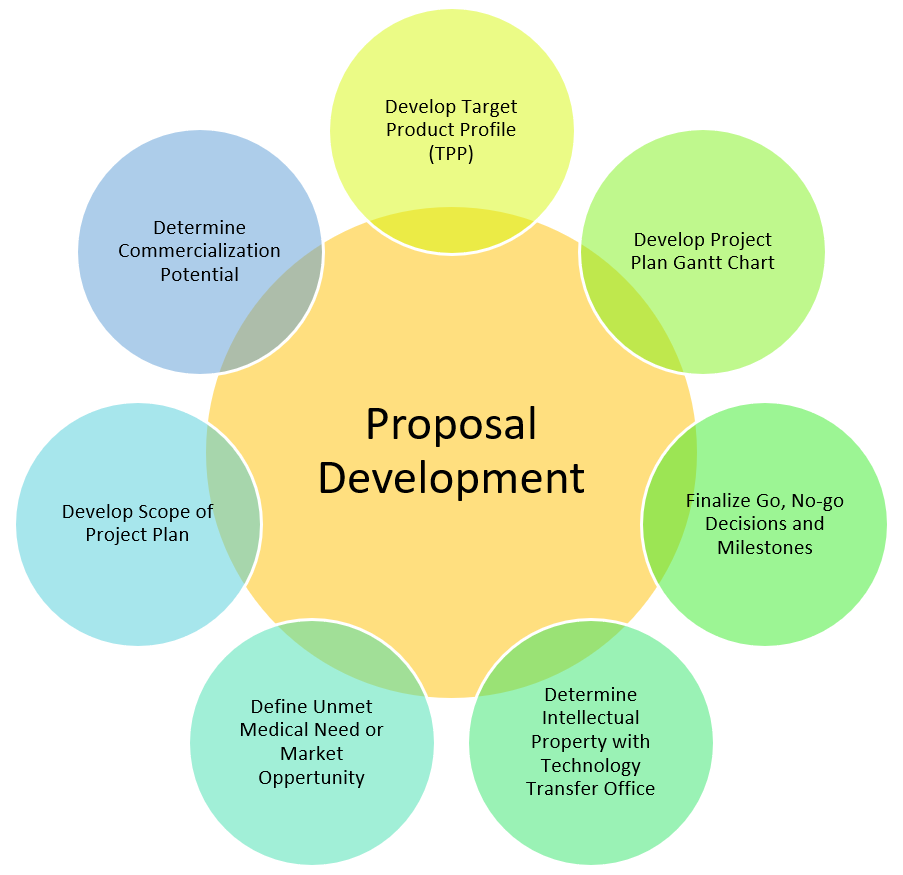Project Management Resources
Nuts and Bolts of Project Management
Developing the Proposal and Setting Expectations with the Project Team
Proposal Development
The primary investigator should attend skills development workshops that cover topics such as commercialization, regulatory approval, and meetings with the technology transfer office. Regardless of the project manager's level of engagement with the application process, the innovator should be able to address the following aspects of their technology and proposed product.

Setting Expectations prior to funding and starting the project
Before receiving an award, the project manager should work with the primary investigator and the research team to set expectations and finalize project milestones. Formal documentation such as proof of prior engagement with the Technology Transfer Office (TTO) ( commercialization form) or memorandum of understanding ( MOU) help ensure expectations are clearly understood and progress toward deliverables can be measured.
Managing the Project
Ensuring projects stay on course, and risks are avoided or minimized. During the project phase, the project manager should attend lab meetings and discuss project updates with the primary investigator and project team to track progress and to identify technical challenges early to prevent delays and missing milestones. While the goal of milestone driven research is to achieve milestones, unforeseen technical delays or unexpected scientific results may cause the project to miss a key milestone or benchmark. If a benchmark or milestone is missed, it is critical that the project manager work with the PI to either adjust the milestone timeline or identify an appropriate pivot.
Project tracking and reporting
There is a variety of project manager focused software to assist the project manager in tracking projects. (See Resources for a brief review of the most common project management software)
Preparing to Exit
Based on the length of the project and milestones, the project team, including project manager, Principal Investigator, and the technology transfer office representative, should begin discussing the future of the project at least six months prior to the completion of the last milestone. These discussions should include:
- Working with the technology transfer office to identify potential licensing partners
- Soliciting advice from external advisory boards or regional entrepreneurs
- Considerations of spinning-out technology into a company
- Non-dilutive funding options such as federal SBIR/STTR funding
- Pitch-coaching
- Attending regional investor forums to pitch technology to investors